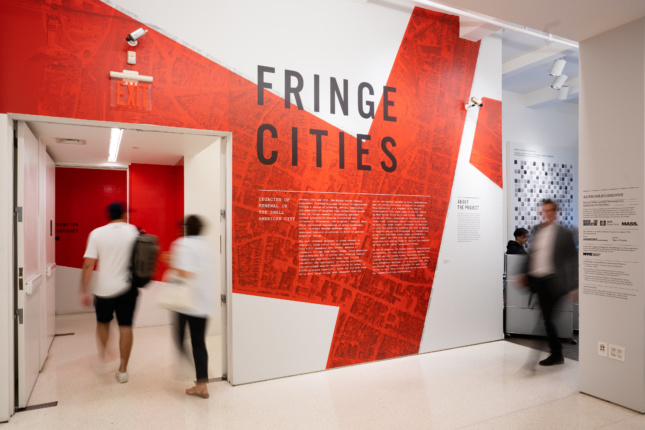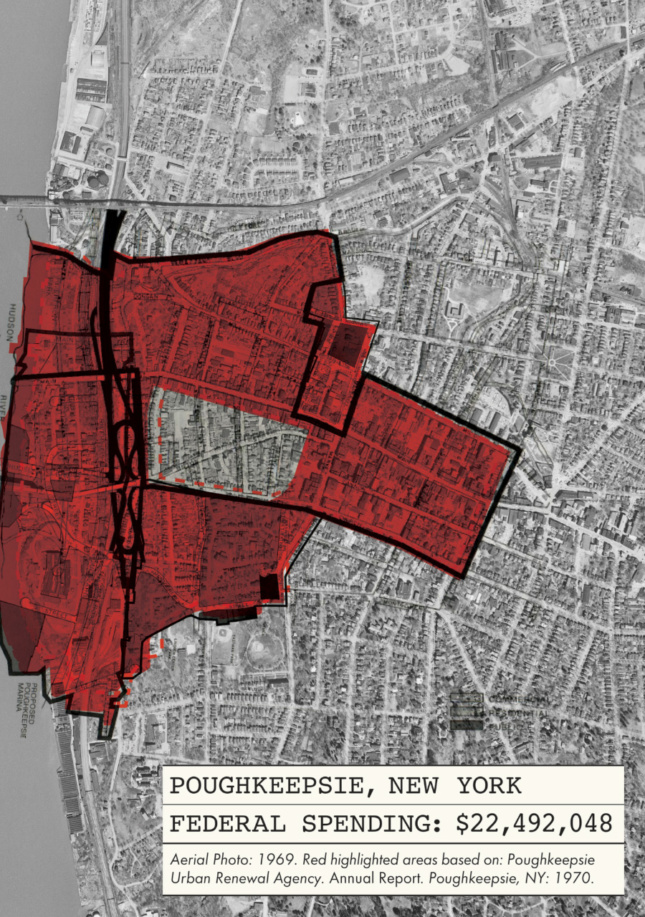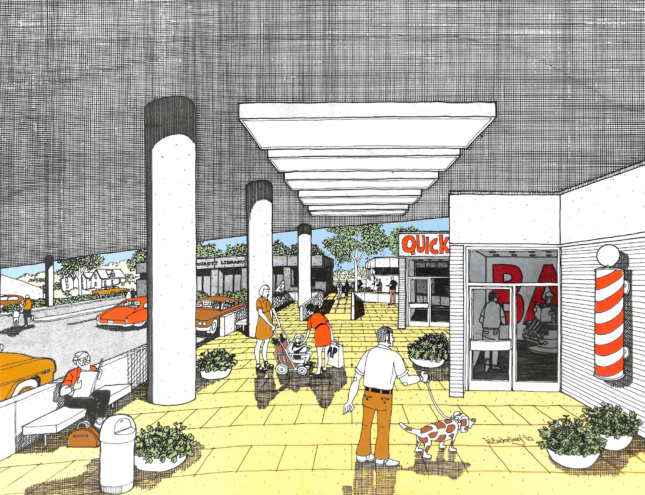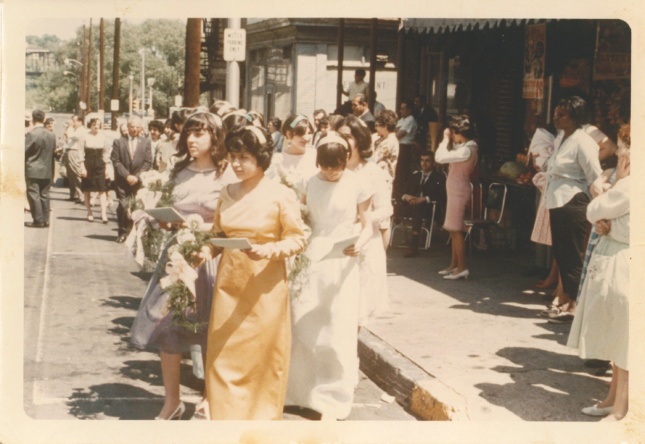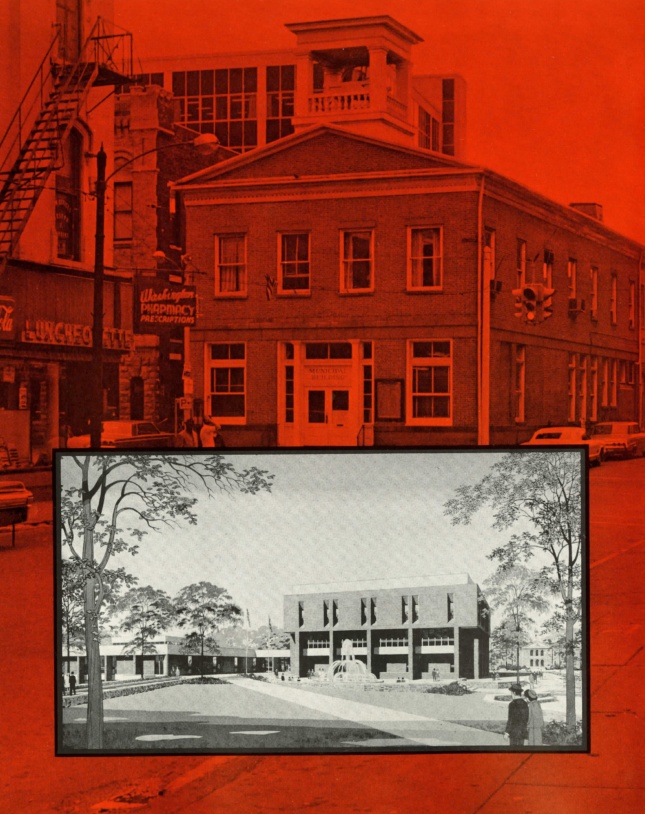The narrative of mid-century urban renewal is not unfamiliar; under the guise of slum clearance, vast tracts of America’s architectural heritage were razed with entire communities (often of color) displaced and warehoused in deleterious expanses of public housing. There is no dearth of imagery or literature stemming from the era, ranging from Jane Jacobs’s grassroots campaign against the all-powerful Robert Moses to the implosion of St. Louis’s infamous Pruitt-Igoe tower blocks. However, often missing from dialogue on the subject is the integral role that federal policy and financing played in the reshaping of the American city, specifically outside of major metropolitan centers.
Opened in early October at New York’s Center for Architecture, the MASS Design Group-curated exhibition Fringe Cities: Legacies of Renewal in the Small American City, is an impressive historical and photographic survey examining the scope and rationale of urban renewal efforts across 100 “fringe” cities—defined as a small urban area with under 150,000 residents located at least 30 miles away from a major metropolitan center, which, are in many circumstances, still attempting to ameliorate conditions cemented by mid-century planning.
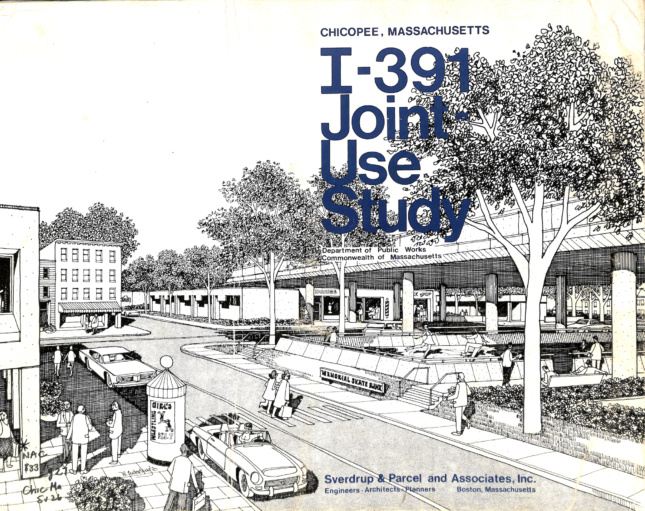
The exhibition opens with a broad outline of federal urban policy over the course of the ongoing century, roughly beginning with programs associated with Franklin D. Roosevelt’s New Deal, then the plateau and decline of national funding and policy following Lyndon B. Johnson’s Great Society, and present day’s irregular growth cycles, facilitated by lopsided regulation. Strengthening the linear narrative of the timeline is a collection of renderings and illustrations produced by contemporaneous architects and designers depicting idyllic post-clearance scenes, tools to convince a skeptical public of the supposed extensive benefits of urban renewal.
The strongest curatorial tool at the initial juncture of the exhibition are aerial images of 42 of the MASS-identified “Fringe Cities,” overlaid with blotches of red that highlight areas slated for demolition and reconstruction in the strain of automobile-centric developments and zoning. This method—which is similar to cartography appraising the damage of World War II bombing campaigns—effectively conveys the disproportionate scalar impact such efforts placed on small urban centers, which in many circumstances altered them beyond recognition within the span of a few years.
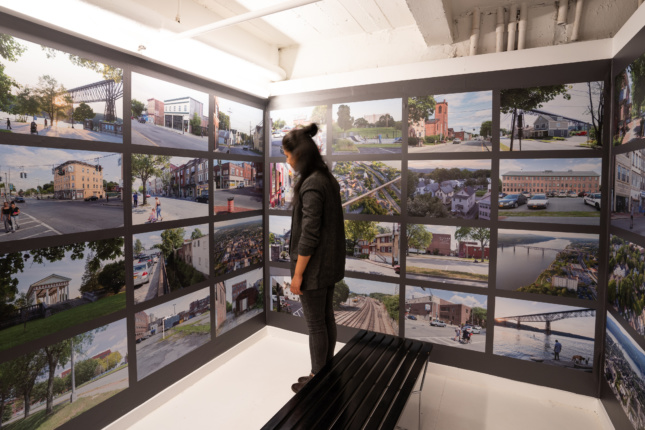
For the purposes of the exhibition, MASS honed in on four specific case studies: Easton, Pennsylvania; Saginaw, Michigan; Spartanburg, South Carolina, and Poughkeepsie, New York. “Being urban in form but offset from more diverse economic centers, these places were particularly ill-equipped to design, administer, and implement meaningful redevelopment strategies, and they were less resilient economically to rebuild in its wake,” said MASS Design Group associate Morgan O’Hara. “Urban America was not always as polarized as we see today, and it is an important narrative to understand these changes, and the role of both policy and design decisions in contributing to the disinvestment of these Fringe Cities.”
If the first floor of the exhibition is geared towards a top-down perspective of urban renewal, the second-half of Fringe Cities brings the topic to street-level with a collection of historic photographs of long lost downtowns juxtaposed with desolate contemporary scenes. One significant inclusion is that of Iwan Baan’s extensive imagery from Poughkeepsie. More importantly, MASS effectively dives into the work that grass-roots organizations have done, in lieu of federal, state, or even municipal funding, reversing or at least halting the economic and demographic decline that the selected cities have experienced for decades.
On this final note, MASS presents the current urban moment as both a challenge and opportunity for architects and designers that requires community engagement to avoid the pitfalls of heavy-handed planning. O’Hara concluded, “In order to accomplish this, it is imperative that designers reach beyond their precise contracted purview to create effective community partnerships, as an outgrowth of this critical understanding: that designers cannot understand or attend to the full range of local needs without embedded, long term community decision making.”
Fringe Cities: Legacies of Renewal in the Small American City
Center for Architecture
536 LaGuardia
New York, New York
Through January 18, 2020






